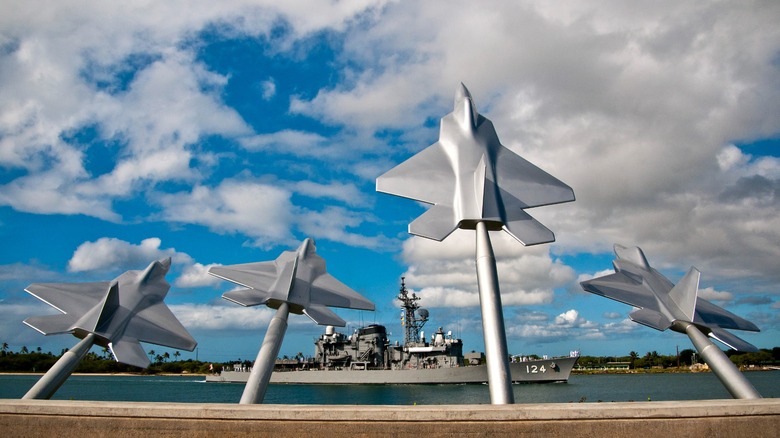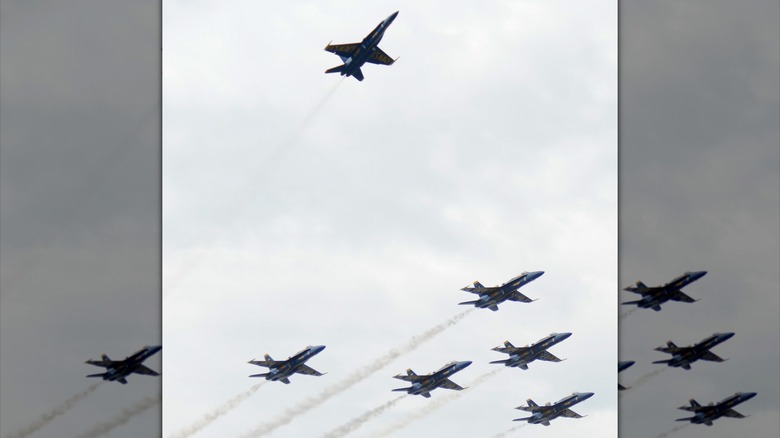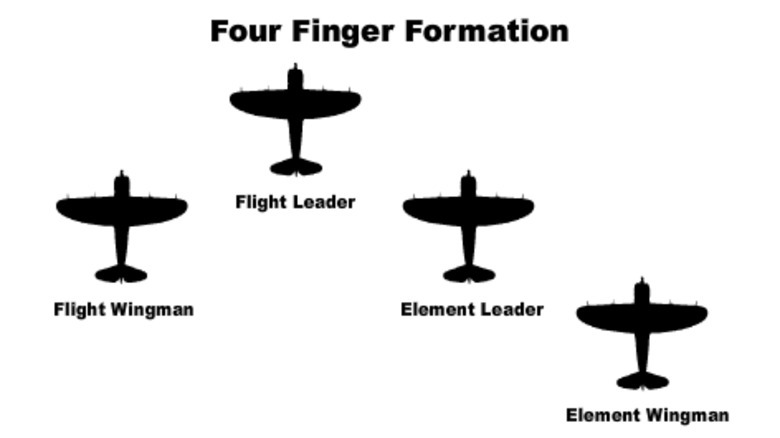Why Fighter Jets Fly Over Some Military Funerals (And Why One Is Higher Than The Rest)
As anyone who has ever served in the United States military knows, there are regulations related to just about every aspect of service, including death. Military funeral honors are practiced by each service branch, and various regulations govern how many personnel are involved, the proper manner of folding the U.S. flag, the playing of "Taps," and much more. The vast majority of funerals are conducted using only two personnel, but significantly more can participate.
In some cases, jets are used to fly over the funeral to honor the dead, and there's a specific way of conducting this type of flight that makes it stand out. The so-called "Missing Man Formation" is a ceremonial flyover involving several aircraft, where one ascends sharply while the remaining jets continue forward. The aircraft that flies above the rest is meant as a respectful salute to the fallen, and the noticeable void left in the formation signifies the loss of the individual being celebrated.
A Missing Man Formation can be flown by a variety of aircraft from across the services. The Navy's flying team, the Blue Angels, often conducts these funerary honors, as do the U.S. Air Force's Thunderbirds in their F-16 Fighting Falcons. These honors are typically reserved for special events, the deaths of high-ranking officers, the return of caskets from overseas deployments, and the loss of military-associated dignitaries. The astronauts who died aboard the STS-51L Challenger Shuttle mission received a Missing Man Formation, and the tradition continues to honor the fallen.
The Missing Man Formation
The Missing Man Formation dates back to World War I, though the original practice has evolved over the years. The first one that approximated the modern manner was flown in honor of Charles W. "Speed" Holman in 1931. It introduced the broken formation, where the missing plane represented "Speed" and wouldn't have been vacant had he still been alive. By the Korean War, the practice was well-solidified in military manuals and regulations, ultimately evolving further into the formation practiced today.
A Missing Man Formation typically utilizes four aircraft, most often fighter jets, but not always. This is based on the formation known as the "Finger-four" (or Four-finger) and comprises two pairs of aircraft in a V-shape formation. The flight leader flies in the front of the formation while the flight wingman takes up the position to the rear-left. The element leader flies opposite, and is the aircraft that flies higher above the rest to signify the missing man (or woman). Finally, the element wingman flies to the rear-right of the flight wingman's position, and remains there after the second wingman leaves the formation.
Missing Man Formations can also be flown by only three aircraft, where the missing plane is absent from the start, signifying the loss being honored. At Arlington National Cemetery, Virginia, in the Washington, D.C., area, this is typically the practice using the Navy's Blue Angels' speedy F/A-18 Super Hornet. The jets also operate at only 1,000 feet altitude, receiving special dispensation to do so from the Federal Aviation Administration that would otherwise limit such activity in a metropolitan area.


